#thun hohenstein
Explore tagged Tumblr posts
Text

Subduing an Opponent
The Thun-Hohenstein Album, long-known as the Thun'sche Skizzenbuch
#knights#combat#duel#duelling#medieval#gothic#armour#europe#european#art#history#middle ages#knight#thun hohenstein#thun’sche skizzenbuch#prague#germany#german#augsburg#armoured#armours#armoury#weapons#weapon#sketchbook#drawings#drawing#sword#swords
1K notes
·
View notes
Text

1788 Heinrich Füger - The Countesses Elisabeth, Christiane and Marie Karoline of Thun-Hohenstein-Klösterle
(Gemäldegalerie, Berlin)
173 notes
·
View notes
Photo
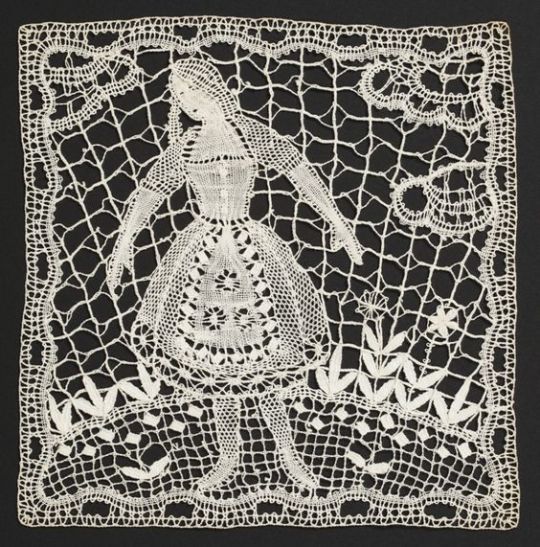
Posted by Kimberly Randall on August 6, 2019
This group of lace doilies and inserts were produced in 1922 by the Wiener Werkstätte under the direction of Dagobert Peche (Austrian, 1887–1923). All four are handmade, but were produced in multiples as both the round doilies and square insert with a male figure are remarkably similar to ones found in the collection at MAK in Vienna. Even in multiples, each was the result of good design made by the hands of skilled craft workers. They were made and often purchased in matching and coordinating sets, and the designs could be reused over time. As an organization of designers and craftspeople, the Wiener Werkstätte modeled their production on an Arts and Crafts ideal: to achieve their goal of making available to the public well-designed goods of superior craftsmanship.
The textile department at the Wiener Werkstätte first began producing lace after 1911. Their early lace designs were fine and delicate and largely favored abstracted rectilinear designs punctuated by isolated floral motifs. Under Dagobert Peche, lace designs shifted in favor of a large open mesh made with heavier threads. Designs became more figurative and exuberant, favoring a baroque Austrian style that depicted fashionably dressed men and women in a variety of expressive poses as well as mythic and symbolic figures such as stags, peacocks and cherubs. Under Peche, women designers became more prominent, and with this acquisition, two pieces of lace by Anny Schröder-Ehrenfels (Austrian, 1898–1972) are added to the collection.
For more information about the lace and embroidery of the Wiener Werkstätte, see The Unknown Wiener Werkstätte Embroidery and Lace: 1906 to 1930, by Christoph Thun-Hohenstein and Angela Völker.
Kimberly Randall is the Collections Manager for the Textiles Department
87 notes
·
View notes
Photo

Where the angst bellows, Teeth Magazine
Photographer: Paula Burbat Art Direction: Paula Burbat & Helena Börjesson Stylist: Sara Filgueira Beauty: Cecilia Thun-Hohenstein Model: Carmen Candela from Trend Model Management Photography Assistant: Blanca Pozo Photography Lab: Bien Bien
11 notes
·
View notes
Text
0 notes
Text
0 notes
Text
0 notes
Text
Old Vienna
Anno 1910
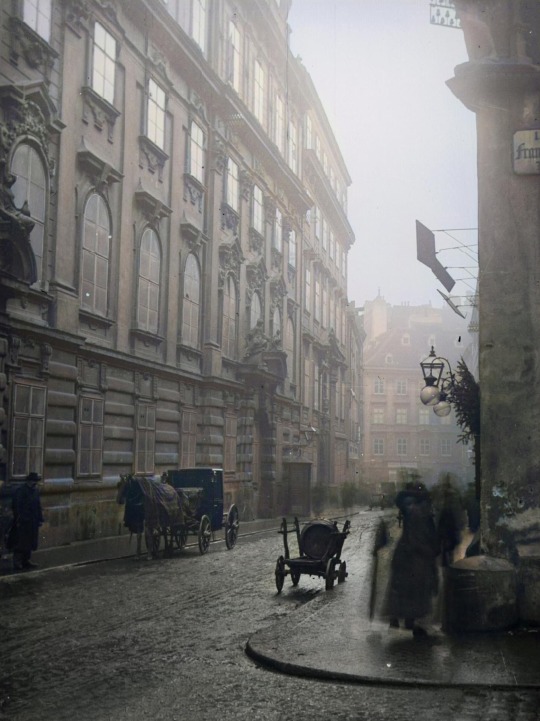
Singerstrasse
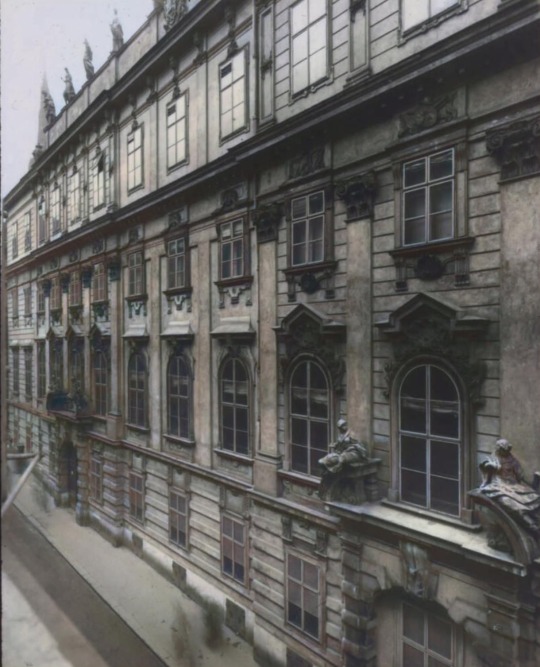
Palais Rottal

Das Palais Rottal ist ein Palais im 1. Wiener Gemeindebezirk. Es befindet sich an der Kreuzung Singerstraße / Grünangergasse. Das Palais beherbergt heute die Volksanwaltschaft und die Finanzprokuratur.
Das ursprüngliche Palais Rottal wurde vermutlich zwischen 1667 und 1683 durch Umbau des Vorgängerbaus errichtet. Obwohl der Name des Architekten nicht bekannt ist, wird das Gebäude Giovanni Pietro Tencalla zugeschrieben, welcher in diesem Zeitraum für die Familie Rottal als Architekt tätig war.
Von diesem Gebäude sind lediglich die beiden Portale und das Vestibül erhalten.
DAS BILLIOTTE'SCHE STIFTUNGSHAUS
Franz Billiotte war gebürtiger Franzose und Leibarzt von Kaiser Leopold I. Er wurde 1665 im Auftrag der niederösterreichischen Stände nach Wien berufen, um einen botanischen Garten für wissenschaftliche Zwecke einzurichten. Billiotte setzte sich sehr für die Armen ein und stiftete dazu auch das oben genannte Gebäude. In diesem Haus erhielten die Armen Wohnung und Verpflegung, außerdem hielt Billiotte darin auch unentgeltlich Ordination ab. Nach Billiottes Tod ging das Gebäude in eine Stiftung über, die das Fortbestehen des Gebäudes für die Armen garantieren sollte.
Das Haus wurde vermutlich vor 1733 vom Vorarlberger Architekten Anton Ospel umgestaltet/renoviert. Es handelte sich dabei um einen schlichten vierstöckigen Bau mit üppig gestaltetem Portal.
1741 fiel die Stiftung dem Dreifaltigkeitsspital und 1745 gemeinsam mit diesem dem vereinigten Spanischen Spital zu. Um etwa diese Zeit ging sowohl das Stiftungshaus als auch das Palais Rottal in den Besitz der Wiener Stadtbank (Wiener Stadt-Banco) über.
Nach dem Erwerb durch die Stadtbank kam es im Jahre 1752 zu einem großen Umbau des ursprünglichen Palais. Ausführender Architekt war Franz Anton Pilgram, ein Schüler von Johann Lucas von Hildebrandt. Das Palais wurde um ein Stockwerk erhöht, außerdem kam es zur Schaffung eines großen zentralen Innenhofs. Ein Meisterstück der Wiener Barockbaukunst ist die Prunktreppe, die sehr langen Stiegenstaffeln aus dem harten Kaiserstein wurden aus Kaisersteinbruch von den Meistern Elias Hügel und Johann Baptist Regondi geliefert.
Die Fassade wurde ebenfalls opulent umgestaltet und ist größtenteils in dieser Form noch heute erhalten.
Einige Jahre nach dem Umbau des Palais wurde dieses mit dem Stiftungshaus zu einem einheitlichen Bau zusammengefasst. Hierzu wurde unter anderem die Fassade des Stiftungshauses der des Palais angeglichen, außerdem wurde ein nördlich des Stiftungshauses gelegenes Gebäude in den Gebäudekomplex integriert.
Ab 1842 wurde bei neuerlichen Umbauarbeiten das Gebäude um ein Stockwerk erhöht. Außerdem wurde am neuen Stockwerk eine Attika angebracht. Auf dieser wurden Figuren angebracht, die zuvor am Winterpalais des Prinzen Eugen in der Himmelpfortgasse verwendet wurden.
Ab 1849 beherbergte das Palais das neu gegründete, von Leo von Thun-Hohenstein geführte k.k. Ministerium für Cultus und Unterricht, bevor es in späteren Jahrzehnten des 19. Jahrhunderts als Sitz der Finanzverwaltung diente.
1903/1904 erfolgte der letzte größere Umbau. Hierzu wurden in der Kumpfgasse zwei Häuser abgerissen, um den Zubau des Hintertrakts zum Palais zu ermöglichen. Zusätzlich zur Finanzverwaltung diente das Gebäude auch ihr nahestehenden Stellen, wie zum Beispiel der Staatsschuldenkassa, bis zum Ende des Zweiten Weltkriegs als Amtsgebäude.
Nach dem Zweiten Weltkrieg nutzte das Zentralbesoldungsamt das Gebäude.
Nach mehrjähriger Renovierung wird das Gebäude seit März 1981 teilweise von der Finanzprokuratur und der restliche Teil seit 1983 von der Volksanwaltschaft genutzt.
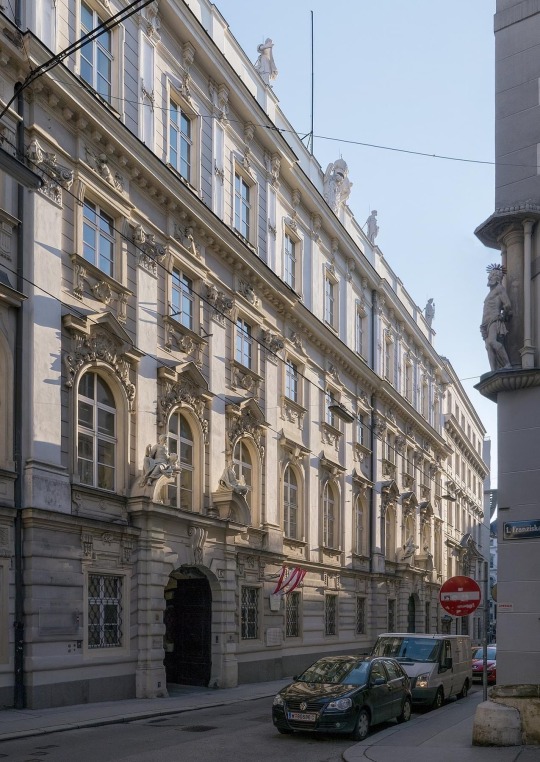
heute, Palais Rottal von der Singerstraße aus gesehen mit Heiligenfigur des Franziskanerklosters
0 notes
Text









" The Thun-Hohenstein album, long-known as the Thun’sche Skizzenbuch, is a bound collection of 112 drawings that visualize armoured figures at rest and in combat, as well as empty armours arrayed in pieces. The collection gathers drawings that span the period from the 1470s to around 1590. While most of the images were executed in Augsburg during the 1540s, the album’s three oldest drawings date to the late-fifteenth century. " - Kirchhoff, C
0 notes
Note
Following on from JoachimNapoleon's ask, I wanted to ask what you know about Poniatowski's relationship with women, especially since you're Polish yourself. From what I've read, he had affairs with many women but two women stand out: Zelia Sitanska (a songstress by trade) and Zofia Czosnowska (formerly Countess Potocka). What can you tell me about his love life? Also thanks for the follow!
Oh, this is an interesting topic, thanks for asking!!! And though I have already posted this info in my Insta (in Polish) I would be delighted to translate it to English and post it here.
So, let’s go!
Józef Poniatowski’s women.
Part I. His “documentary proved” love interests.
1.

Number one in the Poniatowski’s love interest will be his first love, Maria Carolina Anna von Thun und Hohenstein.
She was an Austrian and 6 years younger than Pepi (born on May 19, 1769), and they met by in Vienna in the late 1780s. She was charming and musically talented, and he fell in love with her to such a degree that even considered an option to propose. In a letter to his sister Poniatowski wrote that Karolina seemed to him to possess the most characteristics of the ideal woman and that if he were independent and if Karolina would have agreed to wait for him he would be find his happiness with her.
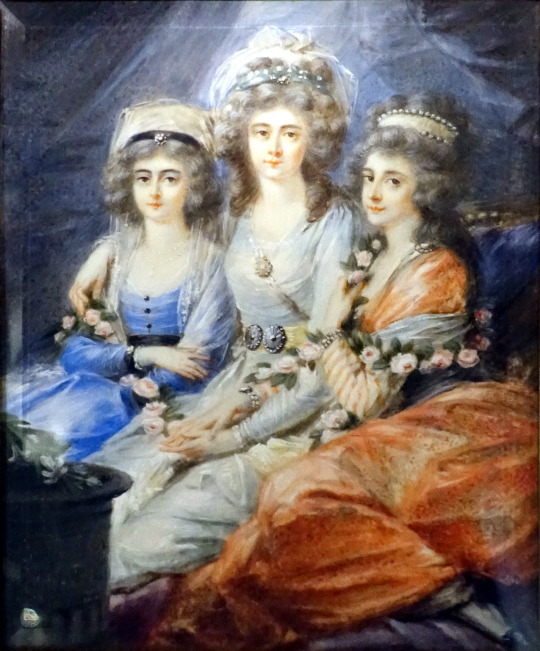
(Carolina - on the right - with her sisters)
But, unfortunately, the fate of Prince Józef at that time depended on the will of his uncle, King Stanisław August, and the latter had completely different intentions towards the nephew. Therefore, in 1788, Pepi, instead of proposing to his chosen one, had to leave Vienna for Warsaw.
And with that is, alas, how the story of these two ended... Because when the last king Poland died ten years later, Carolina von Thun was already a married. But before giving her hand to the Englishman, Lord Richard Guilford, she waited about five years (the wedding took place in October 1793.) And though sources are silent on the topic whether Caroline shared Pepi’s feelings or not, the latter fact in my opinion suggests that she did.
As for Pepi himself - the news about Caroline’s wedding (as well as her premature death - in 1800, at the age of only 30) caused in him a serious depression. Which in turn made it easier for another woman to appear in Poniatowski’s life. The woman who consoled Pepi’s broken heart and helped him to survive that hard time...
But before turning our attention to her we should recall another another person ))
2.

An actress and a mother of prince Jozef’s firstborn.
Her name was Margareth (Małgorzata) Magdalena Wiktoria, she was born in 1767, being a daughter of an actor Leon Sitański she became an actress herself.

The actress Sitańska, engraving from that time

Pregnant Zelia in a theater box, engraving from that time
On September 1791, in Poniatowski’s absence (he was on the military training with his regiment) Zelia gave birth to a boy. The child was christened as Józef, and in the birth certificate was written as a son of a nobleman Józef Chmielnicki, an officer in the imperial service, and his wife Małgorzata née Narbutowicz. (Well, can’t help mentioning theories that the real mother of the boy might have been that Małgorzata Narbutowicz, or another actress of surname Sitańska - Dorothea, Zelia’s stepmother. But, frankly speaking I don’t think all this very plausible)
In any case, whoever the mother of the boy was, the father was certainly Poniatowski, what the prince confirmed again 20 years later, mentioning Jozef Chmelnicki in his will in 1812. (Although the latter was then an officer in the ... Austrian service).
And what about Zelia? It is not known for sure how long their relationship with Pepi lasted.
On one hand, in 1793 in Brussels the prince already met the woman who would be present in his life till his death. But, on the other hand, diarists recalled that in 1794, during the Kościuszko Uprising, Poniatowski "departed for Warsaw ... to his dear Sitańska, leaving the position in danger". Either way, the death of the actress in 1796 naturally put an end to the relationship.
As for Prince Joseph's son, he survived both his alleged mother and father. In 1813 (and later) he fought again on the side of the Austrians. And died in Vienna, after 1860, single and childless.
And now let’s finally move to the woman mentioned above.
3.

Six (or may be even ten) years older than prince Jozef, and maîtresse-en-titre of Poniatowski’s last 20 years of life.
Henriette de Vauban, née de Puget de Barbentane. A Frenchwoman, born in Paris on May 10, 1757. On June 18, 1775, she married a count (after other source - a marquis) Jacob-Anne-Joseph Le Prestre de Vauban. After Revolution outbreak Mme de Vauban emigrated to Brussels. And there, in the house of Poniatowski’s sister Theresa Tyszkiewicz Henrietta in 1793 met Pepi.

A miniature portrait of Mme de Vauban
In 1794 Poniatowski left Belgium to join the Kościuszko Uprising. But a year later, when he settled after Uprising’s fall in Vienna his sister joined him bringing with herself her friend Henriette.
And three years later, when after the death of his uncle Pepi moved to Warsaw, his sister and Mme de Vauban accompanied him again. (Some diarists mentioned that in the first years of life in Warsaw Henriette was accompanied by her husband, but it most probably he came there because he was a member of the entourage of Ludwik de Bourbon, Count of Provence, whose stayed in Warsaw that time)
In Warsaw Pepi settled in the Copper-Roofed (“Pod Blachą”) palace. And Henrietta - as the maîtresse-en-titre - became the “house mistress”. And though she didn’t stay the only woman in the prince's bed in the next 15 years Poniatowski had warm feelings towards her until the end of his life.
(However - can’t help but menton - the Polish diarists of the period recalled Henrietta as a capricious and impetuous person, devoted of beauty. And also accused her of taking advantage of her lover, for "selling" invitations to Blacha, and lending money to Prince Józef, which he himself had previously given her. French source, nevertheless, are more benevolent, stating that Mme de Vauban had charming smile and a soft, pleasant voice. And naming her as a reason why Poniatowski never married.)
And the will prince Jozef wrote in 1812 states, in my opinion, that Henriette wasn’t that bad as she was described by the Poles. Because Pepi left her a large sum of money, and mentioned "the kindness and gratitude that her heart gave him and which, even with death, will not end". And when, in 1813, when, having returned from the Moscow campaign, prince Jozef had again to leave Warsaw with the army, Mme de Vauban accompanied him to Kraków.
Little, however, is known about what happened to Henriette after Poniatowski’s death. One of the diarists recalled that after receiving the news of the battle of Leipzig Mme De Vauban was “drowned in tears and desperation; shut up and does not accept anyone.” Another historian found out that in 1816 she was still in Warsaw, busy with the matters of the inheritance received from Prince Józef. And finally, in French sources I managed to find that Mme de Vauban died on February 24, 1829, in Pantin.
And now the last woman, about which it is known for sure she had a relationship with Jozef Poniatowski.
4.

Twenty years younger than him, a mother of his second son and... unfaithful?
Sophia (Zofia) Czosnowska née Potocka. She was born in 1782 (some sources say even in 1787), so she was almost 20 - if not 25 - years younger than Prince Józef. In 1808, when they met, she was already a wife of a distant relative of hers, had a son and even manage to separated from her husband (the latter, by the way, was even older than Poniatowski).
The diarists of the epoch recall Czosnowska as "a very shapely blonde with beautiful facial features, large blue eyes and a charming smile" who "turned her heads by the dozen". So small wonder that Prince Józef succumbed to her spells.

Sophia in Paris in 1830th
Becoming his lover, beautiful Sophia did with Pepi whatever she wanted. It was for her "charming eyes" that he organized dances in Advent in 1808. A year later, after his victory over the Austrians, he stayed in Krakow for several months, she joined him there.
But at the end of the year she returned to Warsaw and it was there that in December 1809 her second son was born. At baptism, the boy was given the name Józef and the surname - Ponitycki, because Pepi, of course, considered this child his own. Although, as Anna Nakwaska mentions in her letters, Czosnowska did not lack other admirers (a certain Szołdrski and an officer named Gawar were mentioned among them). But Prince Józef, according to the same Nakwaska, did not care about such a state of affairs at all, living with it all "in the best harmony".
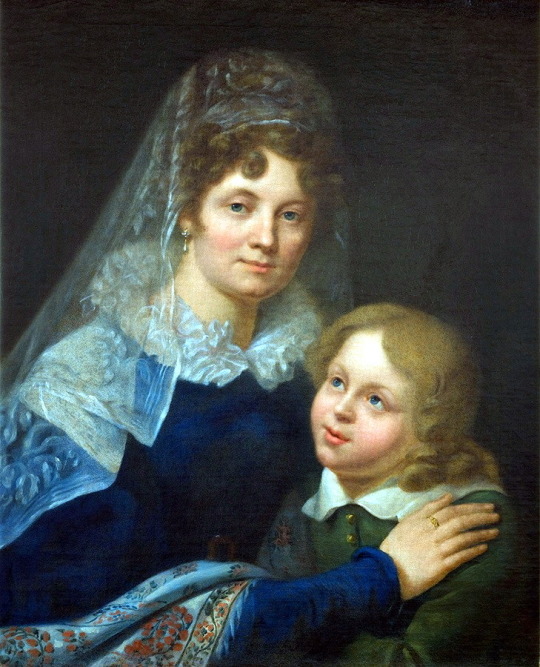
Józef Peszka, Zofia née Potocki Czosnowska with her son Józef Ponitycki
In 1813, when Prince Poniatowski and his army went to Krakow, Czosnowska, together with Mme de Vauban, accompanied him again. When the news of the death of the prince near Leipzig reached Poland, she played the role of a "pained widow". (Although she was very dissatisfied with the ordinances from Pepie's will concerning her and her son.) And a year later, at the Congress of Vienna, she had another affair.
Then she finally divorced her first husband, and in 1822 she again stood on the wedding carpet, this time with Aleksander Oborski. The marriage lasted 10 years, the spouse gave his surname to two of his wife's illegitimate daughters, but eventually took his own life by committing suicide.
After her husband's death, Sophia Oborska lived the life of a merry widow for some time, but at the end of her life she entered into a trial with her own children. Died, indebted and abandoned by relatives, in Wiesbaden in 1857.
———————————————————————
And these four were the only women about which is definitely known Józef Poniatowski did have feelings for. Of course, there were some others, but about all of them - including the emperor’s sister Pauline - we can state that they were love interests of Pepi with this or that degree of probability.
Of course, I am going to write about them as well (first in my Instagram, then here), so, please, stay tuned!
#józef poniatowski#karolina von thun#zelia sitańska#henriette de vauban#zofia czosnowska#photoshop#józef poniatowski’s women
34 notes
·
View notes
Photo

Portrait of Maria Wilhelmine, Countess Thun-Hohenstein, Heinrich Friedrich Füger , c. 1790, Cleveland Museum of Art: European Painting and Sculpture
Size: Framed: 22.4 x 17.5 cm (8 13/16 x 6 7/8 in.); Unframed: 17.5 x 12.7 cm (6 7/8 x 5 in.) Medium: watercolor on ivory in an ormolu frame
https://clevelandart.org/art/1942.1142
4 notes
·
View notes
Photo


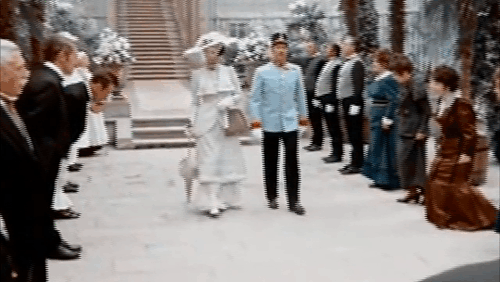
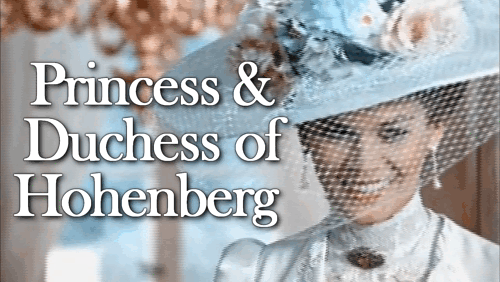

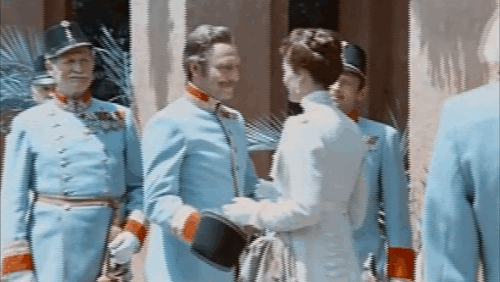


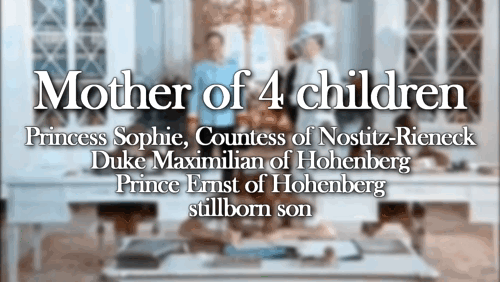
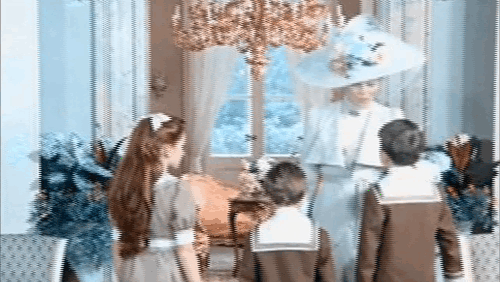
House of Chotek & of Habsburg: Countess Sophie Chotek of Chotkowa and Wognin
Sophie was born as the fifth child of Count Bohuslav Chotek of Chotkow and Wognin and his wife Countess Wilhelmine Kinsky of Wchinitz and Tettau. Her siblings were Count Wolfgang Chotek, Countess Zdenka Chotek, Princess Marie of Thun and Hohenstein, Countesses Karoline and Henriette of Nostitz-Rieneck, Countess Oktavia of Schönburg-Glachau and Countess Antoinette Wuthenau-Hohenthurm.
Sophie grew up in Dresden where her father had worked as diplomat. She had received an education and led the household of her father after her mother had died. When she fell for her future husband Archduke Franz Ferdinand, most of her sisters were already married and one of them even served Crown Princess Stéphanie of Austria-Hungary as a lady-in-waiting. When exactly the couple actually met for the first time is debated to this day. The time frame is somewhen between 1894 and 1897. However this may be, they were able to spent a few days icognito at Bad Neuenahr in 1898 with the help of a former lady-in-waiting of Franz Ferdinand’s aunt Empress Elisabeth.
The relationship only became public in 1899. The year before, Sophie had made clear she wanted to live closer to her lover, since she was still living with her father in Dresden. But Franz Ferdinand wanted to avoid the Viennese gossip and suggested she should apply as a lady-in-waiting to Archduchess Isabella, The Duchess of Teschen, who lived with her family in Bratislava. Isabella was supposedly a difficult mistress to please, so Sophie was reluctant but eventually did apply and received the post. From now on, Franz Ferdinand accepted every invitation of Archduke Friedrich’s family and visited them twice or thrice a week. Isabella hoped he was interested in her eldest daughter Archduchess Maria Christina of Austria-Teschen. One day, Isabella discovered a locket that Franz Ferdinand had dropped on the tennis court and opened it. She had expected to find a picture of her daughter in it but instead she found one of Sophie inside.
As soon as the relationship became public, the court tried to separate the couple. Sophie was not of high enough rank for a member of the House of Habsburg’s main line and heir to the throne, although her family had been nobles since the middle ages. Only when Franz Ferdinand’s stepmother Infanta Maria Theresa of Portugal spoke to Emperor Franz Joseph, the couple received permission to marry morganatically on April 8th, 1900, which they did less than three months later on July 1st. The condition was that Franz Ferdinand signed a document which effectively removed his future children from the line of succession and prevented him from crowning, in case of a succession to the throne, Sophie Empress of Austria, Queen of Hungary, Bohemia, Croatia or any other Habsburg realm or even making her an archduchess. This was especially important since Hungary did not practise the concept of morganatical marriages but instead viewed all marriages as equal. For her wedding, Sophie received the title of Fürstin (Princess) of Hohenberg and the style of Serene Highness. Nevertheless, Sophie was treated as a second-class noble by the Viennese society. The only one she was closed with in the Imperial family was Crown Prince Rudolf’s widow Princess Stéphanie of Belgium.
Only in 1909, after the birth of all of her children, she received the elevation to Duchess and the style of a Highness. She received many congratulation letters for it, one of them came form the German Emperor Wilhelm II who was a friend of her husband. But while her husband ranked only below The Emperor as his heir, she ranked behind all the archduchesses as well as the mediatized princesses and countess of Austria and Hungary. This difference in rank kept some courts from hosting the couple as it was difficult to do so without making any mistakes. But this did not keep the Romanian King Karl I. and his wife Elisabeth of Wied in 1909 and the British King George V and his wife Mary of Teck in 1913 from hosting them.
A little more than half a year after their visit to Britain, Sophie and Franz Ferdinand were dead. They were assassinated in Sarajevo. While he was shot in the neck, a bullet hit her in the abdomen. Their last recorded conversation was her asking him what had happened to him and him begging her to stay alive for the children while calling her by her nickname Sopherl. The murder of Sophie and Franz Ferdinand is regarded as the spark that set World War I in motion. Even in death, protocol took presedence. Franz Ferdinand had the right to be buried in the Imperial Crypt but Sophie did not. Instead they had requested to be buried together at the Habsburg’s summer home of Arstetten castle.
Their children Sophie, Maximilian and Ernst were raised by Sophie’s sister Henriette while their legal guardian became their uncle and good friend of their father Prince Jaroslav of Thun and Hohenstein. Sophie and Maximilian decided to forgive Nedeljko Čabrinović for the murder of their parents after her showed regret for doing it while Ernst did not sign the letter they wrote to him. Ernst and Maximilian were later imprisoned in a concentration camp in Dachau for making anti-Nazi statements after the Annextion of Austria by The Third Reich. But they survived their imprisonment. Through her daughter Sophie is an ancestor of the actors Friedrich and Max von Thun. The latter actually played Franz Ferdinand’s cousin Crown Prince Rudolf in a miniseries in 2006.
// Florinda Bolkan in The Day That Shook the World (1975)
______________________________________________________________
Requested by anonymous
#perioddramaedit#women in history#historyedit#Sophie Chotek#European history#Austrian history#Bohemian history#House of Habsburg#House of Habsburg-Lorraine#House of Chotek#sophie chotek von chotkowa#Sophie Chotek of Chotkowa and Wognin#1900s#20th century#1800s#1890s#19th century#morganatic wives#Duchess Sophie of Hohenberg#period drama#The Day That Shook The World#requests#historic women
181 notes
·
View notes
Photo

Obscure and strikingly atypical postcard from 1917 of the bounteous oil fields of Sullivan, Pa., and, most specifically, the Sullivan #11 oil well, which produced copiously up until 1987.
In a display meant to instill fear in the hearts of both his enemies and close associates, a supernatural projection of Archduke Thun und Hohenstein would often appear in the inky spray atop one or more of his prized derricks.
Known by those in the oil and gas community as the Soul of Planet Mars, the Archduke was a petroleum cacodemon of the first order, and the fussy, white-gloved recording secretary of the West Hemphill Congregation of Shades & Caterwauls.
A mentor of great influence on Baby Gruenwald, the iconic baby lovingly dedicated his groundbreaking self-help book ‘How to Win Friends and Influence the Demon Horde’ (Damnation House, 1933) to the physically repulsive and morally twisted cacodemon.
#baby gruenwald#oil well#oil derrick#pennsylvania#postcard#vintage postcard#old postcard#roughneck#gasoline#petrol#filth
24 notes
·
View notes
Text
Lovely Lace
This group of lace doilies and inserts were produced in 1922 by the Wiener Werkstätte under the direction of Dagobert Peche (Austrian, 1887–1923). All four are handmade, but were produced in multiples as both the round doilies and square insert with a male figure are remarkably similar to ones found in the collection at MAK in Vienna. Even in multiples, each was the result of good design made by the hands of skilled craft workers. They were made and often purchased in matching and coordinating sets, and the designs could be reused over time. As an organization of designers and craftspeople, the Wiener Werkstätte modeled their production on an Arts and Crafts ideal: to achieve their goal of making available to the public well-designed goods of superior craftsmanship.
The textile department at the Wiener Werkstätte first began producing lace after 1911. Their early lace designs were fine and delicate and largely favored abstracted rectilinear designs punctuated by isolated floral motifs. Under Dagobert Peche, lace designs shifted in favor of a large open mesh made with heavier threads. Designs became more figurative and exuberant, favoring a baroque Austrian style that depicted fashionably dressed men and women in a variety of expressive poses as well as mythic and symbolic figures such as stags, peacocks and cherubs. Under Peche, women designers became more prominent, and with this acquisition, two pieces of lace by Anny Schröder-Ehrenfels (Austrian, 1898–1972) are added to the collection.
For more information about the lace and embroidery of the Wiener Werkstätte, see The Unknown Wiener Werkstätte Embroidery and Lace: 1906 to 1930, by Christoph Thun-Hohenstein and Angela Völker.
Kimberly Randall is the Collections Manager for the Textiles Department
from Cooper Hewitt, Smithsonian Design Museum https://ift.tt/2MHdbGc via IFTTT
4 notes
·
View notes
Text
Visualizing the Fight Book Tradition: Collected Martial Knowledge in the Thun-Hohenstein Album by Chassica Kirchhoff
“Abstract: The Thun-Hohenstein album, long-known as the Thun’sche Skizzenbuch, is a bound collection of 112 drawings that visualize armoured figures at rest and in combat, as well as empty armours arrayed in pieces. The collection gathers drawings that span the period from the 1470s to around 1590. While most of the images were executed in Augsburg during the 1540s, the album’s three oldest drawings date to the late-fifteenth century. Two of these works, which form a codicological interlude between the first and second quires, find parallels in the illustrations of contemporaneous martial treatises. This article traces the pictorial lineages of these atextual images through comparative analyses of fight books produced in the German-speaking lands, and considers how the representational strategies deployed in martial treatises inflected the ways that book painters and their audiences visualized the armoured body. This exploration situates a manuscript from which one of the drawings derives, Peter Falkner’s Art of Knightly Defense, now in Vienna, within the Augsburg book painters’ workshops that would later give rise to the Thun album. Finally, this study considers how the transmission and representation of martial knowledge in late fifteenth- and early sixteenth-century Augsburg contributed to the later depictions of armoured bodies that populate the album”
You can find a PDF of it here on the Acta Periodica Duellatorum website.
#hema#historical fencing#historical martial arts#swords#sword#fencing#acta periodica#acta periodica duellatorum
9 notes
·
View notes
Photo










Josef Frank Against Design
Das Anti-formalistische Werk / The Anti-formalist Oeuvre of the Architect
Ed. by Christian Thun-Hohenstein, Herrmann Czech, Sebastian Hackenschmidt,
Birkhauser Architecture, Basel 2015, 368 pages,
english and german edition , ISBN-13: 978-3035609998
email if you want to buy :[email protected]
euro 70,00*
With Josef Frank (1885-1967), the catalogue for the exhibition in the MAK, Vienna, focuses on one of the most important Austrian architects of the 20th century. In addition to his groundbreaking architectural oeuvre, the discussion considers Frank as an extremely productive designer who, although sceptical and a prominent cultural critic, must be thanked for his many important stimuli to international design that are still valid today. As an architect and designer who is still "contemporary" to this day, Frank was known for his pragmatic design approach, and pleaded for "normal" - but not at all normative - architecture and design. For Frank, the qualities of social experience were more important than formal aspects; his interiors and utilitarian articles were primarily intended to serve the comfort of the user. Josef Frank's ideas of an uncontrived and unpretentious utilitarian expedience, which was focused on an independent, free, enlightened housing and living culture beyond all stylistic dogmas and fashionable conventions, is more topical today than ever.
orders to: [email protected]
twitter: @fashionbooksmi
flickr: fashionbooksmilano
instagram: fashionbooksmilano
tumblr: fashionbooksmilano
8 notes
·
View notes